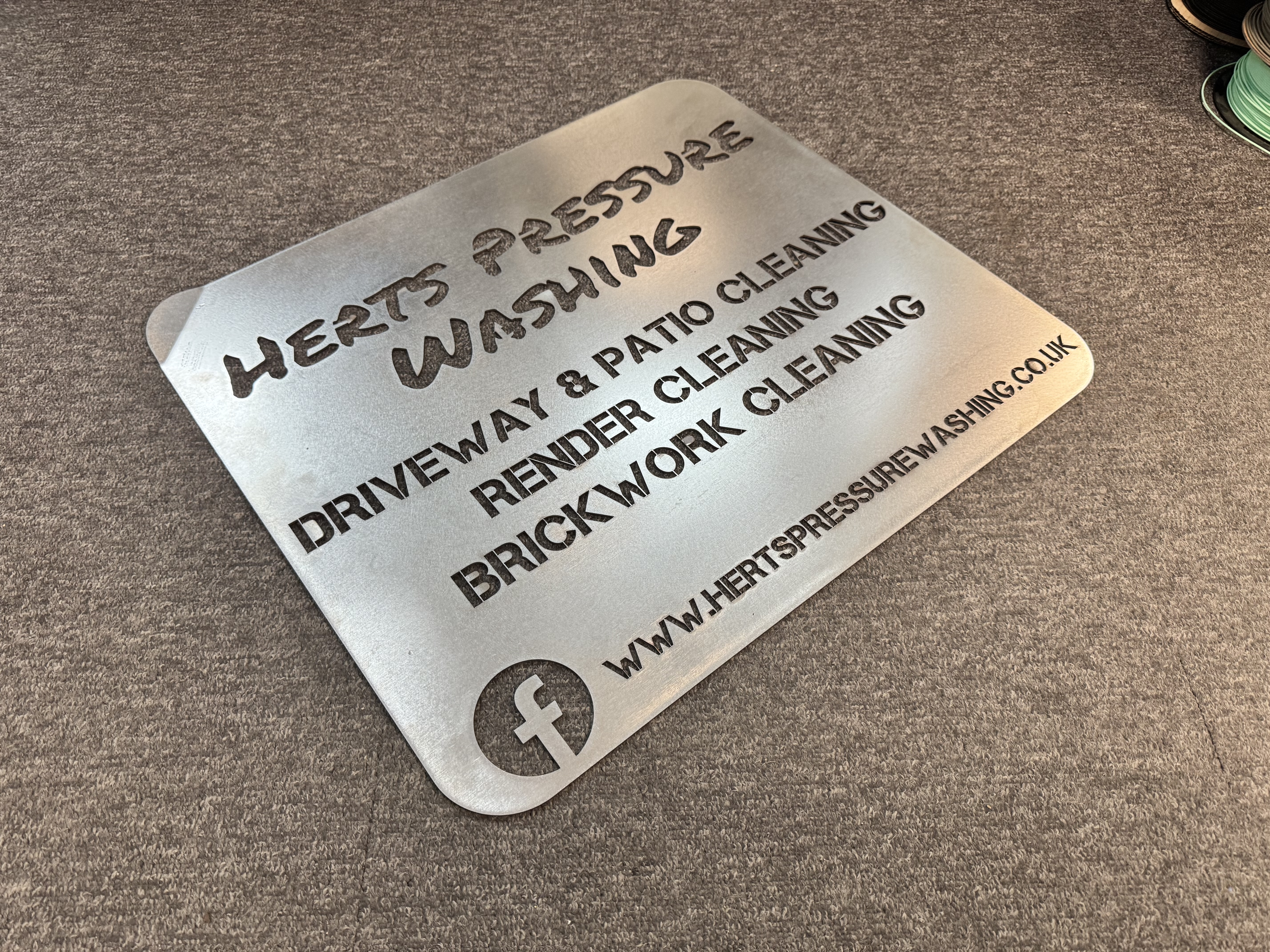What do you get?
- 1 x Stainless Steel Clean Advertising Stencil in 2mm 304 600mm x 400mm
What do we need from you?
- High Resolution Wordart or logo file
From this we can give you an idea of what can be achieved - complex images are difficult to represent as a stencil as part of the image must remain to be stencilled around.
- Sketch of basic design of your requirements wording for your stencil
*** Please note we cannot re-design your logo if the image is not high enough quality to be scaled for the drawing program - a full refund would be issued in this instance ***
Reverse graffiti, also known as clean graffiti or eco-graffiti, is an environmentally friendly form of street advertising. Unlike traditional graffiti, which involves using paint or markers to create images or text on surfaces, reverse graffiti entails removing dirt, grime, or pollution from a surface to reveal an image or message. This process often results in a high-contrast and visually striking design; drawing attention to urban pollution and the impact it has on the environment. Reverse graffiti has gained popularity as a unique and thought-provoking way for companies and artists to communicate their messages while simultaneously raising awareness about environmental issues.
Here's how reverse graffiti works:
-
Surface Selection: The client chooses surfaces that are dirty or covered in pollutants, such as the floors, sides of buildings, tunnels, bridges, or other urban structures.
-
Stencil Design: The client creates a stencil or asks us to design the image or message they want to reveal. The artwork you send us needs to be lossless, we cannot re-draw your logo from scratch if the images supplied are not high enough resolution.
-
Application Method: Instead of using aggressive chemicals which can be damaging to the environment, reverse graffiti can be applied using hot or cold high pressure water.
Reverse graffiti can be temporary or more long-lasting, depending on the methods and tools used. Over time, environmental factors, weather, and natural processes may cause the cleaned surface to become dirty again, slowly erasing the artwork. Nevertheless, the impermanence of reverse graffiti is often seen as part of its charm and a commentary on environmental issues.





